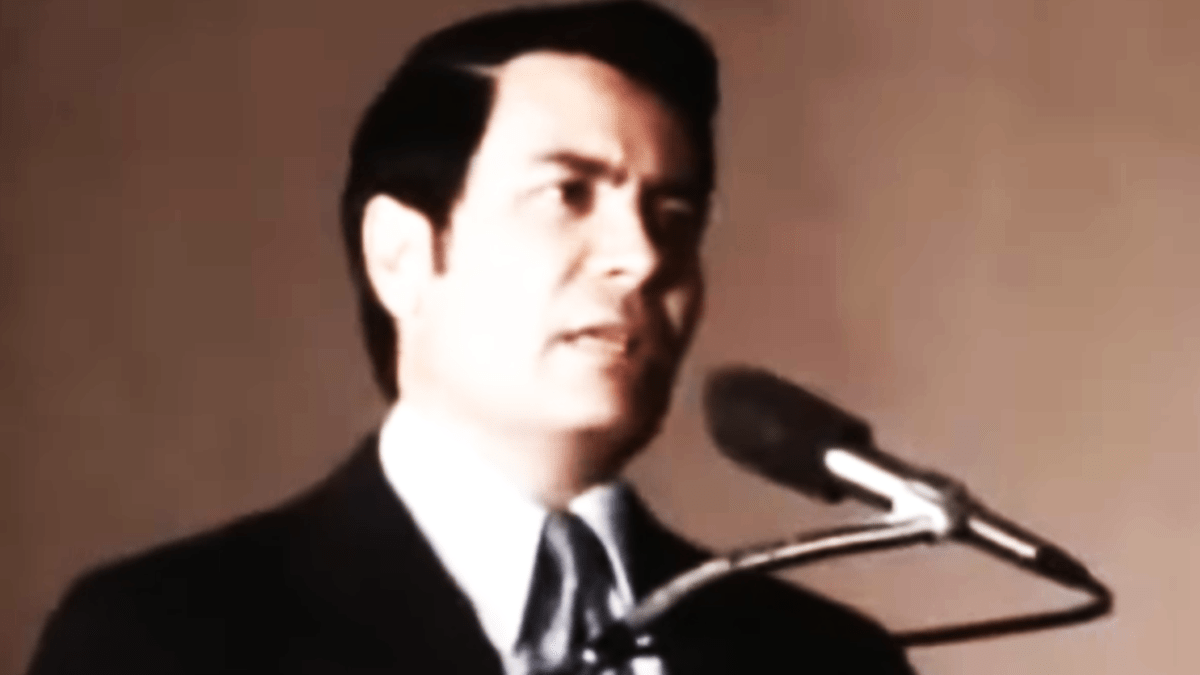This article discusses suicide. Please read with caution.
James Warren Jones, commonly known as Jim Jones, was born in Crete, Indiana, on May 13, 1931. He founded and led the Peoples Temple of the Disciples of Christ. This alternative spirituality organization existed between 1954 and 1978 and had strong ties to the Christian Church (Disciples of Christ). They were essentially a cult, which, in turn, made Jones a cult leader.
Jones’ affinity for Pentecostalism and his desire to spread the movement’s message developed as a child, as a regular churchgoer. His followers snowballed in number after he got ordained as a Christian minister. He was obsessed with power, referring to himself as “the Prophet,” and founded the Peoples Temple in 1954. Jones even convinced people he could heal the sick and see into the future.
Jones, his inner circle, and the Peoples Temple are best known for orchestrating a mass murder-suicide at Jones’ remote jungle commune at Jonestown, Guyana, on November 18, 1978 — the day of his death. He referred to the event — which has undoubtedly influenced society’s perception of cults in a significant way — as “revolutionary suicide.”
But what precisely happened to Jones on that dark and fateful day in 1978?
How did Jim Jones die?
Allegations of abuse and financial irregularities (it’s believed Jones was illegally diverting his cult members’ incomes into his bank accounts) ran rife regarding Jones and the Peoples Temple, which resulted in an unofficial criminal investigation taking place. On November 14, 1978, Leo Ryan, U.S. representative from California’s 11th congressional district, arrived in Jonestown along with a group of reporters and some of the cultist’s family members to conduct said investigation.
Four days later, after Ryan’s group had convinced 14 members of the cult that Jones wasn’t the great man he claimed to be, the investigating party attempted to leave along with the 14 defectors. Concerned about the information they’d obtained, Jones wasn’t having that, so he ordered their assassination.
Only Ryan and four others (three reporters included) were killed, with the rest escaping, prompting Jones to activate a suicide plan.
He commanded his followers to drink a punch that had cyanide in it, which most of the submissive acolytes did without question. When Guyanese troops arrived in Jonestown a day later, they found 913 people dead, including 304 minors. The event is now known as the Jonestown Massacre.
Among the dead was Jones himself — but his death differed from his followers. He’d died from a gunshot wound to the head. Some people believe the gunshot was self-inflicted, while others, including his son, Stephan, suggest he’d asked a follower to shoot him. Those details remain unknown, but the official autopsy conducted by Guyanese coroner Cyril Mootoo officially proclaimed Jones’ cause of death as suicide.
Jones was just 47 years old when he died, but he managed to leave behind one of the most evil legacies in United States history. He was essentially responsible for the deaths of almost 1,000 people — and his willingness to die along with them all was a clear indication of his guilt for the other crimes people accused him of.
His body was cremated, and his ashes were scattered in the Atlantic Ocean.
If you or someone you know is struggling or in crisis, help is available. Call or text 988 or chat at 988lifeline.org. A list of international crisis resources can be found here.
